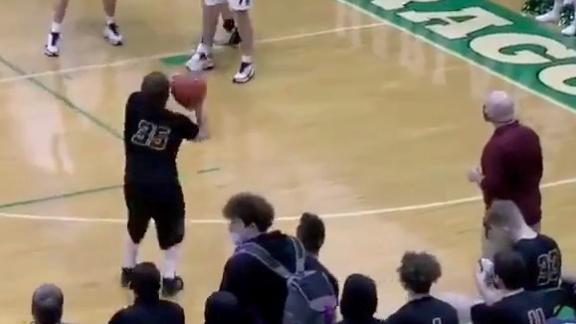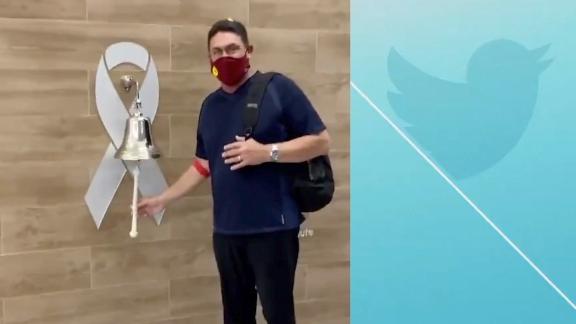My thoughts on a few current storylines in open-wheel racing …
Graham Rahal: It's mind boggling that the most promising American formula car racer of his generation is on the sidelines 10 days from the first race of the 2010 Izod IndyCar Series season.
Yet despite being the youngest pole and race winner in series history -- not to mention an American with an Indy 500-winning surname -- that's where 20-year-old Graham Rahal finds himself. Meanwhile, Milka Duno -- she of less talent but more sponsorship money -- was confirmed by Dale Coyne Racing for her first full-season IndyCar campaign.
Rahal is not alone in his predicament. Quality drivers like the experienced Oriol Servia and the rapidly improving Mario Moraes don't have rides, and even if they came up with sponsorship at the 11th hour, where would they take it? Newman/Haas/Lanigan Racing could field another car, as could HVM Racing. Coyne has another car, but Rahal chose not to pursue that avenue.
Indy Racing League president of commercial operations Terry Angstadt says the league is aware of the image problem a rideless Rahal presents.
"It's a huge priority, and we're approaching it that way," Angstadt said. "Graham has decided to turn one offer down, and I think probably for good reasons for him. I respect that. We have multiple presentations under way, and we're working hard to gain him sponsorship. I'm hopeful we'll see him in St. Pete [March 28], but that's not a guarantee yet. I certainly hope he is."
A couple of years ago, IRL management would have dipped into the Hulman-George coffers and ensured that a marketable rising star like Rahal made it to the grid. Those days are gone.
"To make direct investment at this point? Our economy doesn't allow that," Angstadt said. "We have dedicated sales people trying to help solicit sponsorship and have different drivers -- like a Graham -- baked into those presentations so that we help raise the money. We just can't afford to pay it ourselves."
For his part, Rahal has been staying in shape, working the phones, and driving and flying around the Midwest trying to drum up sponsorship. He is also impressed with new IRL CEO Randy Bernard.
"I just want everyone to know Randy Bernard is great!" Rahal said in a Twitter account post. "He has helped more in the past 12 hours than anyone ever before I think!"
USF1 goes under: Is anyone really surprised that Team USF1 didn't make it to the starting line for this year's Formula One World Championship?
I love Formula One racing, and I dearly wish there was more American interest and involvement in the sport. But I questioned whether running a team out of Charlotte was the best way to enter a Europe-based sport. And I was not impressed by the way an organization so keen to identify itself as an all-American team was set to campaign two obscure non-American pay drivers.
I also doubted USF1 founder and technical director Ken Anderson's ability to bring a major project across the finish line. Like Anderson's 2003 Falcon IRL IndyCar, USF1's first car appears to have been stillborn. At least the Falcon made it to the prototype stage.
Several of my friends worked for USF1, and I feel bad about the way they lost their jobs. Peter Windsor the journalist would have been outraged at the way Peter Windsor the USF1 founder and co-team principal has pretty much disappeared over the past couple of months as the project unraveled.
The sad thing is now that USF1's credibility with the FIA (Formula One's governing body) has been wiped out, the odds of the team being granted an entry for 2011 are almost zero. Even if Anderson & Co. get the car designed and built by 2011.
RIP, Formula Atlantic: Organizers of the Cooper Tires Atlantic Championship Powered by Mazda announced Wednesday that the 2010 series is being placed on hold. Call it what you want, but there will be no Formula Atlantic for the first time since 1974, a sad end for an important part of the North American road racing ladder.
In the mid- to late 1970s, Formula Atlantic launched the career of Gilles Villeneuve and pitted the best homegrown stars like Bobby Rahal and Price Cobb against international stars like Keke Rosberg. After a low period in the 1980s, Formula Atlantic again thrived in the 1990s, and over the years, top competitors included Michael Andretti, Jimmy Vasser, Jacques Villeneuve, Patrick Carpentier and A.J. Allmendinger.
The nimble four-cylinder cars were the closest thing America offered to European formula car racing, although they were occasionally criticized for being under-powered and over-downforced. But the main problem Formula Atlantic faced over the past 25 years was the lack of a defined American formula car ladder system and competition from two iterations of the Indy Lights championship, which features larger, more powerful cars than Atlantics and for the past 10 years has been affiliated with the IRL IndyCar Series.
With F2000, Star Mazda, Formula Atlantic and Indy Lights, there were simply too many open-wheel alternatives on the ladder, and Atlantic was the one that didn't make the cut. Sad for historical reasons, but necessary given the formula's diminished status over the past few years.




